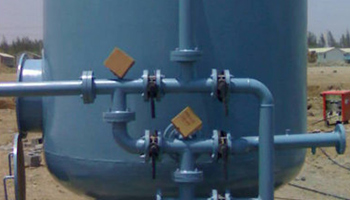
Product Description
Iron can be removed from water, either in its soluble form or insoluble form. As soluble ferrous ions, iron removal can be carried out by the following process :
(1) Ion exchange using a metal selective (chelating) strong acid cation resin.
(2) Reverse osmosis provided the total iron in the feed water is < 0.05 mg/l.
There are several main types of processes that can achieve removal of total iron from water, via its insoluble forms :
(1) Chemical oxidation - Strong oxidants such as ozone, hydrogen peroxide and chlorine can be dosed to fully oxidise soluble iron to insoluble ferric hydroxide for its removal by clarification or filtration.
(2) Media adsorption - Various active medias can be used in presence of chlorine which acts as catalyse for oxidation reactions. The media also serves to filter out the suspended particles of ferric hydroxide produced.
(3) pH adjustment - The pH can be adjusted to above 8 by aeration and/or dosing caustic. Flocculation is then carried out to maximise particle size, before removal by either clarification or filtration. The above processes are all capable of achieving total iron reductions down to the 0.3 mg/l limit set for potable water.